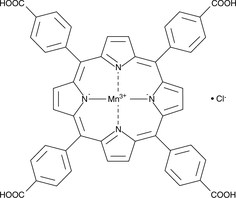Chemicals
Showing 27451–27600 of 41137 results
-
MMB2201 is a synthetic cannabinoid that combines methyl valinate with the 1-(5-fluoropentyl)-indole-3-keto subgroup of AM2201 (Item No. 10707). The physiological and toxicological properties of this compound are not known. This product is intended for forensic and research applications.
Brand:CaymanSKU:-MMB2201 is a synthetic cannabinoid that combines methyl valinate with the 1-(5-fluoropentyl)-indole-3-keto subgroup of AM2201 (Item No. 10707). The physiological and toxicological properties of this compound are not known. This product is intended for forensic and research applications.
Brand:CaymanSKU:-MMDA-2 (hydrochloride) (Item No. 17659) is an analytical reference standard that is classified as an amphetamine. It only weakly induces the release of serotonin or dopamine from rat brain synaptosomes and does not produce amphetamine-like responses in drug discrimination studies in rats.{25970,30481} Instead, MMDA-2 is thought to act as a 5-HT2A agonist, which may account for hallucinogenic effects.{30480} This product is intended for forensic and research applications.
Brand:CaymanSKU:-Available on backorder
MMDA-2 (hydrochloride) (Item No. 17659) is an analytical reference standard that is classified as an amphetamine. It only weakly induces the release of serotonin or dopamine from rat brain synaptosomes and does not produce amphetamine-like responses in drug discrimination studies in rats.{25970,30481} Instead, MMDA-2 is thought to act as a 5-HT2A agonist, which may account for hallucinogenic effects.{30480} This product is intended for forensic and research applications.
Brand:CaymanSKU:-Available on backorder
MMDA-2 (hydrochloride) (Item No. 17659) is an analytical reference standard that is classified as an amphetamine. It only weakly induces the release of serotonin or dopamine from rat brain synaptosomes and does not produce amphetamine-like responses in drug discrimination studies in rats.{25970,30481} Instead, MMDA-2 is thought to act as a 5-HT2A agonist, which may account for hallucinogenic effects.{30480} This product is intended for forensic and research applications.
Brand:CaymanSKU:-Available on backorder
MMDPPA (Item No. 31580) is an analytical reference standard categorized as an amphetamine. MMDPPA is a precursor in the synthesis of MDA.{28110} This product is intended for research and forensic applications.
Brand:CaymanSKU:31580 - 1 mgAvailable on backorder
MMDPPA (Item No. 31580) is an analytical reference standard categorized as an amphetamine. MMDPPA is a precursor in the synthesis of MDA.{28110} This product is intended for research and forensic applications.
Brand:CaymanSKU:31580 - 5 mgAvailable on backorder
MMDPPO (Item No. 31579) is an analytical reference standard categorized as an amphetamine. MMDPPO is an intermediate in the synthesis of (±)-MDA (Item Nos. ISO60189 | 11554).{28809} This product is intended for research and forensic applications.
Brand:CaymanSKU:31579 - 1 mgAvailable on backorder
MMDPPO (Item No. 31579) is an analytical reference standard categorized as an amphetamine. MMDPPO is an intermediate in the synthesis of (±)-MDA (Item Nos. ISO60189 | 11554).{28809} This product is intended for research and forensic applications.
Brand:CaymanSKU:31579 - 5 mgAvailable on backorder
MMG-0358 is an inhibitor of indolamine 2,3-dioxygenase 1 (IDO1; IC50s = 2 and 80 nM for the mouse and human enzyme, respectively).{54011,50812} It is selective for IDO1 over tryptophan 2,3-dioxygenase (TDO; IC50s = >100 µM for mouse and human TDO).{54011}
Brand:CaymanSKU:29828 - 1 mgAvailable on backorder
MMG-0358 is an inhibitor of indolamine 2,3-dioxygenase 1 (IDO1; IC50s = 2 and 80 nM for the mouse and human enzyme, respectively).{54011,50812} It is selective for IDO1 over tryptophan 2,3-dioxygenase (TDO; IC50s = >100 µM for mouse and human TDO).{54011}
Brand:CaymanSKU:29828 - 10 mgAvailable on backorder
MMG-0358 is an inhibitor of indolamine 2,3-dioxygenase 1 (IDO1; IC50s = 2 and 80 nM for the mouse and human enzyme, respectively).{54011,50812} It is selective for IDO1 over tryptophan 2,3-dioxygenase (TDO; IC50s = >100 µM for mouse and human TDO).{54011}
Brand:CaymanSKU:29828 - 5 mgAvailable on backorder
Matrix metalloproteinases (MMPs) belong to a family of proteases that play a crucial role in tissue remodeling and repair by degrading extracellular matrix proteins to enable cell migration.{16569} MMP Inhibitor II is a reversible, broad-range inhibitor of MMPs. It has been reported to inhibit MMP-1 (IC50 = 24 nM), MMP-3 (IC50 = 18.4 nM), MMP-7 (IC50 = 30 nM), and MMP-9 (IC50 = 2.7 nM).{25901}
Brand:CaymanSKU:-Matrix metalloproteinases (MMPs) belong to a family of proteases that play a crucial role in tissue remodeling and repair by degrading extracellular matrix proteins to enable cell migration.{16569} MMP Inhibitor II is a reversible, broad-range inhibitor of MMPs. It has been reported to inhibit MMP-1 (IC50 = 24 nM), MMP-3 (IC50 = 18.4 nM), MMP-7 (IC50 = 30 nM), and MMP-9 (IC50 = 2.7 nM).{25901}
Brand:CaymanSKU:-Matrix metalloproteinases (MMPs) belong to a family of proteases that play a crucial role in tissue remodeling and repair by degrading extracellular matrix proteins to enable cell migration.{16569} MMP Inhibitor II is a reversible, broad-range inhibitor of MMPs. It has been reported to inhibit MMP-1 (IC50 = 24 nM), MMP-3 (IC50 = 18.4 nM), MMP-7 (IC50 = 30 nM), and MMP-9 (IC50 = 2.7 nM).{25901}
Brand:CaymanSKU:-MMP-13 Inhibitor is a pyrimidine dicarboxamide that inhibits matrix metalloproteinase-13 (MMP-13, also known as collagenase-3) with an IC50 value of 8 nM.{32009,32010} MMP-13 Inhibitor binds to pockets that are unique to MMP-13, rather than the catalytic zinc, and thus is specific for MMP-13 over other MMPs.{32009,32010} MMP-13 Inhibitor blocks osterix-dependent calcification of matrices in limb bud cells during endochondral ossification.{32011}
Brand:CaymanSKU:-Available on backorder
MMP-13 Inhibitor is a pyrimidine dicarboxamide that inhibits matrix metalloproteinase-13 (MMP-13, also known as collagenase-3) with an IC50 value of 8 nM.{32009,32010} MMP-13 Inhibitor binds to pockets that are unique to MMP-13, rather than the catalytic zinc, and thus is specific for MMP-13 over other MMPs.{32009,32010} MMP-13 Inhibitor blocks osterix-dependent calcification of matrices in limb bud cells during endochondral ossification.{32011}
Brand:CaymanSKU:-Available on backorder
MMP-13 Inhibitor is a pyrimidine dicarboxamide that inhibits matrix metalloproteinase-13 (MMP-13, also known as collagenase-3) with an IC50 value of 8 nM.{32009,32010} MMP-13 Inhibitor binds to pockets that are unique to MMP-13, rather than the catalytic zinc, and thus is specific for MMP-13 over other MMPs.{32009,32010} MMP-13 Inhibitor blocks osterix-dependent calcification of matrices in limb bud cells during endochondral ossification.{32011}
Brand:CaymanSKU:-Available on backorder
MMP-2 Inhibitor I is a hydroxamate-based, long-chain fatty acid that acts as a reversible inhibitor of matrix metalloproteinase (MMP)-2 (Ki = 1.6 µM), a protein implicated in the pathological breakdown of extracellular matrix proteins.{31343} Increased levels of MMP-2 are associated with tumor invasion and metastasis. This compound has been shown to attenuate cancer cell migration.{31344} It has also been used to preserve blood-brain barrier function in a rat model of pneumococcal meningitis.{31342}
Brand:CaymanSKU:19644 -Available on backorder
MMP-2 Inhibitor I is a hydroxamate-based, long-chain fatty acid that acts as a reversible inhibitor of matrix metalloproteinase (MMP)-2 (Ki = 1.6 µM), a protein implicated in the pathological breakdown of extracellular matrix proteins.{31343} Increased levels of MMP-2 are associated with tumor invasion and metastasis. This compound has been shown to attenuate cancer cell migration.{31344} It has also been used to preserve blood-brain barrier function in a rat model of pneumococcal meningitis.{31342}
Brand:CaymanSKU:19644 -Available on backorder
MMP-2 Inhibitor II is an oxirane p-sulfonamido analog of SB-3CT (Item No. 16337) that irreversibly inhibits matrix metalloproteinase-2 (MMP-2; Ki = 2.4 µM).{30467} It less potently inhibits MMP-1 and -7 (Kis = 45 and 379 µM, respectively) and does not inhibit MMP-3, -7, or -9.{30467} MMP-2 Inhibitor II, at 5 µM, attenuates glucose-induced MMP-2 activity and expression, as well as subsequent apoptosis, in retinal endothelial cells.{30468} It has also been used to examine the role of MMP-2 in rheumatoid synovial fibroblast survival, inflammation, and cartilage degradation.{30469}
Brand:CaymanSKU:-Out of stock
MMP-2 Inhibitor II is an oxirane p-sulfonamido analog of SB-3CT (Item No. 16337) that irreversibly inhibits matrix metalloproteinase-2 (MMP-2; Ki = 2.4 µM).{30467} It less potently inhibits MMP-1 and -7 (Kis = 45 and 379 µM, respectively) and does not inhibit MMP-3, -7, or -9.{30467} MMP-2 Inhibitor II, at 5 µM, attenuates glucose-induced MMP-2 activity and expression, as well as subsequent apoptosis, in retinal endothelial cells.{30468} It has also been used to examine the role of MMP-2 in rheumatoid synovial fibroblast survival, inflammation, and cartilage degradation.{30469}
Brand:CaymanSKU:-Out of stock
MMP-2 Inhibitor II is an oxirane p-sulfonamido analog of SB-3CT (Item No. 16337) that irreversibly inhibits matrix metalloproteinase-2 (MMP-2; Ki = 2.4 µM).{30467} It less potently inhibits MMP-1 and -7 (Kis = 45 and 379 µM, respectively) and does not inhibit MMP-3, -7, or -9.{30467} MMP-2 Inhibitor II, at 5 µM, attenuates glucose-induced MMP-2 activity and expression, as well as subsequent apoptosis, in retinal endothelial cells.{30468} It has also been used to examine the role of MMP-2 in rheumatoid synovial fibroblast survival, inflammation, and cartilage degradation.{30469}
Brand:CaymanSKU:-Out of stock
MMP-2/MMP-9 inhibitor I is a potent inhibitor of matrix metalloproteinase-2 (MMP-2) and MMP-9 (IC50s = 310 and 240 nM, respectively).{32343} It acts by binding zinc at the active site of these MMPs. MMP-2/MMP-9 inhibitor I is active in vivo as well as in vitro and blocks MMP-2/MMP-9-dependent invasion, tumor growth, and metastasis in both cell culture and mouse tumor models.{32343} This compound has been used to elucidate the roles of MMP-2 and MMP-9 in diverse systems, including mammary epithelial cell transformation, neuronal dysfunction, lymphocyte recruitment, and progressive hereditary kidney disease.{32340,32341,32342,32344}
Brand:CaymanSKU:20315 -Available on backorder
MMP-2/MMP-9 inhibitor II is a dual inhibitor of matrix metalloproteinase-2 (MMP-2) and MMP-9 (IC50s = 17 and 30 nM, respectively).{32343} In mice, it suppresses lung colonization of Lewis lung carcinoma cells and inhibits tumor-induced angiogenesis, tumor growth, and liver metastasis.{32343},{37366}
Brand:CaymanSKU:24314 - 1 mgAvailable on backorder
MMP-2/MMP-9 inhibitor II is a dual inhibitor of matrix metalloproteinase-2 (MMP-2) and MMP-9 (IC50s = 17 and 30 nM, respectively).{32343} In mice, it suppresses lung colonization of Lewis lung carcinoma cells and inhibits tumor-induced angiogenesis, tumor growth, and liver metastasis.{32343},{37366}
Brand:CaymanSKU:24314 - 500 µgAvailable on backorder
MMP-3 inhibitor is a peptide inhibitor of matrix metalloproteinase-3 (MMP-3) with a Ki value of 95 nM.{41487}
Brand:CaymanSKU:24315 - 1 mgAvailable on backorder
MMP-3 inhibitor is a peptide inhibitor of matrix metalloproteinase-3 (MMP-3) with a Ki value of 95 nM.{41487}
Brand:CaymanSKU:24315 - 5 mgAvailable on backorder
Matrix metalloproteinases (MMPs) belong to a family of proteases that play a crucial role in tissue remodeling and repair by degrading extracellular matrix proteins to enable cell migration.{16569} MMP-3 (also known as stromelysin-1) is thought to play a role in the vascular remodeling that occurs during aneurysm formation and may also be involved in wound repair, progression of atherosclerosis, and tumor initiation.{28397} MMP-3 inhibitor VIII is a cell permeable sulfonamide-based hydroxamic acid that binds to the active site of MMP-3 (Ki = 23 nM) and prevents its activity.{28399} This compound has also been shown to inhibit mouse macrophage metalloelastase MME/MMP-12 with an IC50 value of 13 nM.{28398}
Brand:CaymanSKU:-Out of stock
Matrix metalloproteinases (MMPs) belong to a family of proteases that play a crucial role in tissue remodeling and repair by degrading extracellular matrix proteins to enable cell migration.{16569} MMP-3 (also known as stromelysin-1) is thought to play a role in the vascular remodeling that occurs during aneurysm formation and may also be involved in wound repair, progression of atherosclerosis, and tumor initiation.{28397} MMP-3 inhibitor VIII is a cell permeable sulfonamide-based hydroxamic acid that binds to the active site of MMP-3 (Ki = 23 nM) and prevents its activity.{28399} This compound has also been shown to inhibit mouse macrophage metalloelastase MME/MMP-12 with an IC50 value of 13 nM.{28398}
Brand:CaymanSKU:-Out of stock
Matrix metalloproteinases (MMPs) belong to a family of proteases that play a crucial role in tissue remodeling and repair by degrading extracellular matrix proteins to enable cell migration.{16569} MMP-3 (also known as stromelysin-1) is thought to play a role in the vascular remodeling that occurs during aneurysm formation and may also be involved in wound repair, progression of atherosclerosis, and tumor initiation.{28397} MMP-3 inhibitor VIII is a cell permeable sulfonamide-based hydroxamic acid that binds to the active site of MMP-3 (Ki = 23 nM) and prevents its activity.{28399} This compound has also been shown to inhibit mouse macrophage metalloelastase MME/MMP-12 with an IC50 value of 13 nM.{28398}
Brand:CaymanSKU:-Out of stock
MMP-8 Inhibitor I is a selective inhibitor of the neutrophil collagenase matrix metalloproteinase-8 (MMP-8) with an IC50 value of 4 nM.{34599} This inhibitor does not target the activities of other MMPs in vitro.{34587,34589} MMP-8 cleaves interstitial collagens and has exhibited activity in atherosclerotic plaques, angiogenesis, and stem cell mobilization.{34585} Additionally, MMP-8 expression is observed in normal mammary epithelial cells, whereas a loss of expression is observed in human ductal carcinoma in situ and the deletion of MMP-8 accelerates tumor onset in a mouse model of aggressive breast cancer.{34586,34590}
Brand:CaymanSKU:21852 -Out of stock
MMP-9 inhibitor I is an inhibitor of matrix metalloproteinase-9 (MMP-9) that is selective over MMP-1 and MMP-13 (IC50s = 5, 1,050, and 113 nM, respectively).{25729} It also decreases the activity of TNF-α converting enzyme (TACE) in a dose-dependent manner (IC50 = 0.54 µM).{36445} MMP-9 inhibitor I decreases TNF-α secretion stimulated by LPS in BV-2 microglial cells when used at concentrations of 50 and 100 µM.
Brand:CaymanSKU:-MMP-9/MMP-13 inhibitor I is a cell-permeable inhibitor of matrix metalloproteinases (MMPs) that most potently inhibits MMP-9 and MMP-13 (IC50s = 0.9 nM for both).{33201} It less effectively inhibits MMP-1, MMP-3, and MMP-7 (IC50s = 43, 23, and 920 nM, respectively).{33201} MMP-9/MMP-13 inhibitor I has been used to elucidate the roles of MMPs in biological systems, including tumor cell invasion and pathogenesis of P. falciparum.{33202,33203,33204}
Brand:CaymanSKU:21265 -Out of stock
MMP-9/MMP-13 inhibitor I is a cell-permeable inhibitor of matrix metalloproteinases (MMPs) that most potently inhibits MMP-9 and MMP-13 (IC50s = 0.9 nM for both).{33201} It less effectively inhibits MMP-1, MMP-3, and MMP-7 (IC50s = 43, 23, and 920 nM, respectively).{33201} MMP-9/MMP-13 inhibitor I has been used to elucidate the roles of MMPs in biological systems, including tumor cell invasion and pathogenesis of P. falciparum.{33202,33203,33204}
Brand:CaymanSKU:21265 -Out of stock
MMPIP is a reversible allosteric antagonist of the metabotropic glutamate receptor 7 (mGluR7) that blocks agonist-induced calcium mobilization (IC50 = 26 nM).{30427,30425} It does not affect other mGlu receptors. The modulation of mGluR7 by MMPIP is context dependent, in that it is not observed in all known mGluR7 signaling pathways.{30425} MMPIP has been used to investigate the role of mGluR7 in cocaine-mediated reward signaling, attention and impulse control, and cognitive behavior in mice and rats.{30424,30422,30426} MMPIP also reversibly inhibits constitutive activity of mGluR7 in sympathetic neurons from the rat superior cervical ganglion.{30423}
Brand:CaymanSKU:-Available on backorder
MMPIP is a reversible allosteric antagonist of the metabotropic glutamate receptor 7 (mGluR7) that blocks agonist-induced calcium mobilization (IC50 = 26 nM).{30427,30425} It does not affect other mGlu receptors. The modulation of mGluR7 by MMPIP is context dependent, in that it is not observed in all known mGluR7 signaling pathways.{30425} MMPIP has been used to investigate the role of mGluR7 in cocaine-mediated reward signaling, attention and impulse control, and cognitive behavior in mice and rats.{30424,30422,30426} MMPIP also reversibly inhibits constitutive activity of mGluR7 in sympathetic neurons from the rat superior cervical ganglion.{30423}
Brand:CaymanSKU:-Available on backorder
MMPIP is a reversible allosteric antagonist of the metabotropic glutamate receptor 7 (mGluR7) that blocks agonist-induced calcium mobilization (IC50 = 26 nM).{30427,30425} It does not affect other mGlu receptors. The modulation of mGluR7 by MMPIP is context dependent, in that it is not observed in all known mGluR7 signaling pathways.{30425} MMPIP has been used to investigate the role of mGluR7 in cocaine-mediated reward signaling, attention and impulse control, and cognitive behavior in mice and rats.{30424,30422,30426} MMPIP also reversibly inhibits constitutive activity of mGluR7 in sympathetic neurons from the rat superior cervical ganglion.{30423}
Brand:CaymanSKU:-Available on backorder
MN-001 is an orally bioavailable anti-inflammatory agent whose mechanisms of action include inhibition of eosinophil migration, antagonism of leukotriene receptors, and inhibition of phosphodiesterases 3 and 4.{33367} Other mechanisms of action described for MN-001 include the inhibition of 5-lipoxygenase, phospholipase C, and thromboxane A2.{33367} MN-001 is reported to produce antifibrotic and anti-inflammatory activity in multiple preclinical models and is undergoing clinical investigations for use in the treatment of patients with either idiopathic pulmonary fibrosis or non-alcoholic steatohepatitis.{33367,33366}
Brand:CaymanSKU:11948 - 1 mgAvailable on backorder
MN-001 is an orally bioavailable anti-inflammatory agent whose mechanisms of action include inhibition of eosinophil migration, antagonism of leukotriene receptors, and inhibition of phosphodiesterases 3 and 4.{33367} Other mechanisms of action described for MN-001 include the inhibition of 5-lipoxygenase, phospholipase C, and thromboxane A2.{33367} MN-001 is reported to produce antifibrotic and anti-inflammatory activity in multiple preclinical models and is undergoing clinical investigations for use in the treatment of patients with either idiopathic pulmonary fibrosis or non-alcoholic steatohepatitis.{33367,33366}
Brand:CaymanSKU:11948 - 5 mgAvailable on backorder
MN-001 is an orally bioavailable anti-inflammatory agent whose mechanisms of action include inhibition of eosinophil migration, antagonism of leukotriene receptors, and inhibition of phosphodiesterases 3 and 4.{33367} Other mechanisms of action described for MN-001 include the inhibition of 5-lipoxygenase, phospholipase C, and thromboxane A2.{33367} MN-001 is reported to produce antifibrotic and anti-inflammatory activity in multiple preclinical models and is undergoing clinical investigations for use in the treatment of patients with either idiopathic pulmonary fibrosis or non-alcoholic steatohepatitis.{33367,33366}
Brand:CaymanSKU:11948 - 500 µgAvailable on backorder
MN-18 is a synthetic cannabinoid modeled after AKB48 (APINACA, Item No. ISO00060), with the adamantyl group replaced by a naphthalenyl group. The physiological and toxicological properties of this compound are unknown. This product is intended for forensic and research applications.
Brand:CaymanSKU:-MN-18 is a synthetic cannabinoid modeled after AKB48 (APINACA, Item No. ISO00060), with the adamantyl group replaced by a naphthalenyl group. The physiological and toxicological properties of this compound are unknown. This product is intended for forensic and research applications.
Brand:CaymanSKU:-MN-18 is a synthetic cannabinoid modeled after AKB48 (APINACA, Item No. ISO00060), with the adamantyl group replaced by a naphthalenyl group. The physiological and toxicological properties of this compound are unknown. This product is intended for forensic and research applications.
Brand:CaymanSKU:-MN-25 (Item No. 14249) is an analytical reference standard categorized as a synthetic cannabinoid.{23532} This product is intended for research and forensic applications.
Brand:CaymanSKU:-MN-25 (Item No. 14249) is an analytical reference standard categorized as a synthetic cannabinoid.{23532} This product is intended for research and forensic applications.
Brand:CaymanSKU:-MN-25 (Item No. 14249) is an analytical reference standard categorized as a synthetic cannabinoid.{23532} This product is intended for research and forensic applications.
Brand:CaymanSKU:-MN-25-2-methyl derivative is a cannabinoid (CB) receptor ligand with Ki values of 8 and 29 nM at the central CB1 receptor and peripheral CB2 receptor, respectively.{23532} This product is intended for forensic and research applications.
Brand:CaymanSKU:9001455 - 1 mgAvailable on backorder
MN-25-2-methyl derivative is a cannabinoid (CB) receptor ligand with Ki values of 8 and 29 nM at the central CB1 receptor and peripheral CB2 receptor, respectively.{23532} This product is intended for forensic and research applications.
Brand:CaymanSKU:9001455 - 10 mgAvailable on backorder
MN-25-2-methyl derivative is a cannabinoid (CB) receptor ligand with Ki values of 8 and 29 nM at the central CB1 receptor and peripheral CB2 receptor, respectively.{23532} This product is intended for forensic and research applications.
Brand:CaymanSKU:9001455 - 5 mgAvailable on backorder
Tankyrases (TNKS) are poly-ADP-ribosyltransferases, which cleave NAD+ to produce nicotinamide and ADP-ribose, which is then covalently attached to an acceptor protein in a process known as poly(ADP-ribosyl)ation. MN-64 is a potent inhibitor of TNKS1 and TNKS2 (IC50s = 6 and 72 nM, respectively).{28716} It is ineffective against several poly(ADP-ribosyl) polymerases (IC50 > 19 µM). Through its effects on TNKS, MN-64 inhibits signaling along the Wnt/β-catenin pathway in a cell-based reporter assay.{28716,28717}
Brand:CaymanSKU:-Available on backorder
Tankyrases (TNKS) are poly-ADP-ribosyltransferases, which cleave NAD+ to produce nicotinamide and ADP-ribose, which is then covalently attached to an acceptor protein in a process known as poly(ADP-ribosyl)ation. MN-64 is a potent inhibitor of TNKS1 and TNKS2 (IC50s = 6 and 72 nM, respectively).{28716} It is ineffective against several poly(ADP-ribosyl) polymerases (IC50 > 19 µM). Through its effects on TNKS, MN-64 inhibits signaling along the Wnt/β-catenin pathway in a cell-based reporter assay.{28716,28717}
Brand:CaymanSKU:-Available on backorder
Tankyrases (TNKS) are poly-ADP-ribosyltransferases, which cleave NAD+ to produce nicotinamide and ADP-ribose, which is then covalently attached to an acceptor protein in a process known as poly(ADP-ribosyl)ation. MN-64 is a potent inhibitor of TNKS1 and TNKS2 (IC50s = 6 and 72 nM, respectively).{28716} It is ineffective against several poly(ADP-ribosyl) polymerases (IC50 > 19 µM). Through its effects on TNKS, MN-64 inhibits signaling along the Wnt/β-catenin pathway in a cell-based reporter assay.{28716,28717}
Brand:CaymanSKU:-Available on backorder
Tankyrases (TNKS) are poly-ADP-ribosyltransferases, which cleave NAD+ to produce nicotinamide and ADP-ribose, which is then covalently attached to an acceptor protein in a process known as poly(ADP-ribosyl)ation. MN-64 is a potent inhibitor of TNKS1 and TNKS2 (IC50s = 6 and 72 nM, respectively).{28716} It is ineffective against several poly(ADP-ribosyl) polymerases (IC50 > 19 µM). Through its effects on TNKS, MN-64 inhibits signaling along the Wnt/β-catenin pathway in a cell-based reporter assay.{28716,28717}
Brand:CaymanSKU:-Available on backorder
Mn(III)TBAP is a cell-permeable SOD mimic. At a concentration of 30 µM, it decreases the doubling time of SOD-null E. coli. by 2-fold.{4009}
Brand:CaymanSKU:75850 - 10 mgAvailable on backorder
Mn(III)TBAP is a cell-permeable SOD mimic. At a concentration of 30 µM, it decreases the doubling time of SOD-null E. coli. by 2-fold.{4009}
Brand:CaymanSKU:75850 - 100 mgAvailable on backorder
Mn(III)TBAP is a cell-permeable SOD mimic. At a concentration of 30 µM, it decreases the doubling time of SOD-null E. coli. by 2-fold.{4009}
Brand:CaymanSKU:75850 - 25 mgAvailable on backorder
Mn(III)TBAP is a cell-permeable SOD mimic. At a concentration of 30 µM, it decreases the doubling time of SOD-null E. coli. by 2-fold.{4009}
Brand:CaymanSKU:75850 - 50 mgAvailable on backorder
MNI-caged-L-glutamate is a form of glutamate linked to a 4-methoxy-7-nitroindolinyl (MNI) photoprotecting group that is pharmacologically inactive at neuronal glutamate receptors (up to mM concentrations).{32103} Upon exposure to light (300 – 380 nm excitation), L-glutamate is cleaved of MNI and released within submicroseconds.{32103} This compound can be used to investigate the mechanisms of fast synaptic glutamate receptors in situ.
Brand:CaymanSKU:-Available on backorder
MNI-caged-L-glutamate is a form of glutamate linked to a 4-methoxy-7-nitroindolinyl (MNI) photoprotecting group that is pharmacologically inactive at neuronal glutamate receptors (up to mM concentrations).{32103} Upon exposure to light (300 – 380 nm excitation), L-glutamate is cleaved of MNI and released within submicroseconds.{32103} This compound can be used to investigate the mechanisms of fast synaptic glutamate receptors in situ.
Brand:CaymanSKU:-Available on backorder
MNI-caged-L-glutamate is a form of glutamate linked to a 4-methoxy-7-nitroindolinyl (MNI) photoprotecting group that is pharmacologically inactive at neuronal glutamate receptors (up to mM concentrations).{32103} Upon exposure to light (300 – 380 nm excitation), L-glutamate is cleaved of MNI and released within submicroseconds.{32103} This compound can be used to investigate the mechanisms of fast synaptic glutamate receptors in situ.
Brand:CaymanSKU:-Available on backorder
MNI-caged-L-glutamate is a form of glutamate linked to a 4-methoxy-7-nitroindolinyl (MNI) photoprotecting group that is pharmacologically inactive at neuronal glutamate receptors (up to mM concentrations).{32103} Upon exposure to light (300 – 380 nm excitation), L-glutamate is cleaved of MNI and released within submicroseconds.{32103} This compound can be used to investigate the mechanisms of fast synaptic glutamate receptors in situ.
Brand:CaymanSKU:-Available on backorder
MNS is a β-nitrostyrene that blocks and reverses platelet aggregation induced by such triggers as collagen, U-46619 (Item No. 16450), and ADP (IC50 = 1.1, 2.1, and 4.1 µM, respectively).{24470,24469} It reduces tyrosine phosphorylation in stimulated platelets and inhibits recombinant human Syk and Src (IC50 = 2.8 and 27.3 µM, respectively) in vitro.{24470,24471}
Brand:CaymanSKU:-MNS is a β-nitrostyrene that blocks and reverses platelet aggregation induced by such triggers as collagen, U-46619 (Item No. 16450), and ADP (IC50 = 1.1, 2.1, and 4.1 µM, respectively).{24470,24469} It reduces tyrosine phosphorylation in stimulated platelets and inhibits recombinant human Syk and Src (IC50 = 2.8 and 27.3 µM, respectively) in vitro.{24470,24471}
Brand:CaymanSKU:-MNS is a β-nitrostyrene that blocks and reverses platelet aggregation induced by such triggers as collagen, U-46619 (Item No. 16450), and ADP (IC50 = 1.1, 2.1, and 4.1 µM, respectively).{24470,24469} It reduces tyrosine phosphorylation in stimulated platelets and inhibits recombinant human Syk and Src (IC50 = 2.8 and 27.3 µM, respectively) in vitro.{24470,24471}
Brand:CaymanSKU:-MNS is a β-nitrostyrene that blocks and reverses platelet aggregation induced by such triggers as collagen, U-46619 (Item No. 16450), and ADP (IC50 = 1.1, 2.1, and 4.1 µM, respectively).{24470,24469} It reduces tyrosine phosphorylation in stimulated platelets and inhibits recombinant human Syk and Src (IC50 = 2.8 and 27.3 µM, respectively) in vitro.{24470,24471}
Brand:CaymanSKU:-Mobocertinib is an inhibitor of mutant EGFR and HER2 receptors.{57200,57201} It is selective for the HER2 exon 20 mutants HER2V659E, HER2G660D, HER2G309E, and HER2S310F over wild-type EGFR in Ba/F3 cells.{57200}
Brand:CaymanSKU:31522 - 1 mgAvailable on backorder
Mobocertinib is an inhibitor of mutant EGFR and HER2 receptors.{57200,57201} It is selective for the HER2 exon 20 mutants HER2V659E, HER2G660D, HER2G309E, and HER2S310F over wild-type EGFR in Ba/F3 cells.{57200}
Brand:CaymanSKU:31522 - 10 mgAvailable on backorder
Mobocertinib is an inhibitor of mutant EGFR and HER2 receptors.{57200,57201} It is selective for the HER2 exon 20 mutants HER2V659E, HER2G660D, HER2G309E, and HER2S310F over wild-type EGFR in Ba/F3 cells.{57200}
Brand:CaymanSKU:31522 - 25 mgAvailable on backorder
Mobocertinib is an inhibitor of mutant EGFR and HER2 receptors.{57200,57201} It is selective for the HER2 exon 20 mutants HER2V659E, HER2G660D, HER2G309E, and HER2S310F over wild-type EGFR in Ba/F3 cells.{57200}
Brand:CaymanSKU:31522 - 5 mgAvailable on backorder
Mocetinostat is an orally available inhibitor of histone deacetylases (HDACs) that selectively targets HDAC1 and 2 (IC50s = 0.15 and 0.29 µM, respectively), less potently inhibits HDAC3 and 11 (IC50s = 1.66 and 0.59 µM, respectively) and has negligible actions against HDAC4-8.{29774,29775} It induces hyperacetylation of histones, causes cell cycle blockade, and induces apoptosis in cancer cells in vitro.{29774,29773} Mocetinostat also has antitumor activity in vivo, blocking the growth of human tumor xenografts in mice.{29774} It also significantly reduces cardiac fibrosis following ischemic heart failure in mice.{29776}
Brand:CaymanSKU:-Available on backorder
Mocetinostat is an orally available inhibitor of histone deacetylases (HDACs) that selectively targets HDAC1 and 2 (IC50s = 0.15 and 0.29 µM, respectively), less potently inhibits HDAC3 and 11 (IC50s = 1.66 and 0.59 µM, respectively) and has negligible actions against HDAC4-8.{29774,29775} It induces hyperacetylation of histones, causes cell cycle blockade, and induces apoptosis in cancer cells in vitro.{29774,29773} Mocetinostat also has antitumor activity in vivo, blocking the growth of human tumor xenografts in mice.{29774} It also significantly reduces cardiac fibrosis following ischemic heart failure in mice.{29776}
Brand:CaymanSKU:-Available on backorder
Mocetinostat is an orally available inhibitor of histone deacetylases (HDACs) that selectively targets HDAC1 and 2 (IC50s = 0.15 and 0.29 µM, respectively), less potently inhibits HDAC3 and 11 (IC50s = 1.66 and 0.59 µM, respectively) and has negligible actions against HDAC4-8.{29774,29775} It induces hyperacetylation of histones, causes cell cycle blockade, and induces apoptosis in cancer cells in vitro.{29774,29773} Mocetinostat also has antitumor activity in vivo, blocking the growth of human tumor xenografts in mice.{29774} It also significantly reduces cardiac fibrosis following ischemic heart failure in mice.{29776}
Brand:CaymanSKU:-Available on backorder
Mocetinostat is an orally available inhibitor of histone deacetylases (HDACs) that selectively targets HDAC1 and 2 (IC50s = 0.15 and 0.29 µM, respectively), less potently inhibits HDAC3 and 11 (IC50s = 1.66 and 0.59 µM, respectively) and has negligible actions against HDAC4-8.{29774,29775} It induces hyperacetylation of histones, causes cell cycle blockade, and induces apoptosis in cancer cells in vitro.{29774,29773} Mocetinostat also has antitumor activity in vivo, blocking the growth of human tumor xenografts in mice.{29774} It also significantly reduces cardiac fibrosis following ischemic heart failure in mice.{29776}
Brand:CaymanSKU:-Available on backorder
Moclobemide (Item No. 24361) is an analytical reference standard categorized as an antidepressant.{43268} This product is intended for research and forensic applications.
Brand:CaymanSKU:24361 - 1 mgAvailable on backorder
Moclobemide (Item No. 24361) is an analytical reference standard categorized as an antidepressant.{43268} This product is intended for research and forensic applications.
Brand:CaymanSKU:24361 - 5 mgAvailable on backorder
Moenomycin complex is a mixture of moenomycins A, A12, C1, C3 and C4, which are antibiotics isolated from several strains of Streptomyces that directly inhibit bacterial peptidoglycan glycosyltransferases.{25100} The minimal inhibitory concentration of moenomycin A against various Gram-positive bacteria ranges from 1-100 nM.{25100}
Brand:CaymanSKU:-Moenomycin complex is a mixture of moenomycins A, A12, C1, C3 and C4, which are antibiotics isolated from several strains of Streptomyces that directly inhibit bacterial peptidoglycan glycosyltransferases.{25100} The minimal inhibitory concentration of moenomycin A against various Gram-positive bacteria ranges from 1-100 nM.{25100}
Brand:CaymanSKU:-Moexipril (hydrochloride) is a prodrug to the long-acting angiotensin converting enzyme inhibitor moexiprilat (IC50s = 2.1 nM and 2.7 µM for moexiprilat and moexipril, respectively).{33383} In addition to its antihypertensive activity, moexipril has been identified as a phosphodiesterase 4 inhibitor (IC50 = 38 µM for the PDE4B2 isoform) that increases cAMP in cells.{33382}
Brand:CaymanSKU:21255 -Out of stock
Moexipril (hydrochloride) is a prodrug to the long-acting angiotensin converting enzyme inhibitor moexiprilat (IC50s = 2.1 nM and 2.7 µM for moexiprilat and moexipril, respectively).{33383} In addition to its antihypertensive activity, moexipril has been identified as a phosphodiesterase 4 inhibitor (IC50 = 38 µM for the PDE4B2 isoform) that increases cAMP in cells.{33382}
Brand:CaymanSKU:21255 -Out of stock
Moexipril (hydrochloride) is a prodrug to the long-acting angiotensin converting enzyme inhibitor moexiprilat (IC50s = 2.1 nM and 2.7 µM for moexiprilat and moexipril, respectively).{33383} In addition to its antihypertensive activity, moexipril has been identified as a phosphodiesterase 4 inhibitor (IC50 = 38 µM for the PDE4B2 isoform) that increases cAMP in cells.{33382}
Brand:CaymanSKU:21255 -Out of stock





























